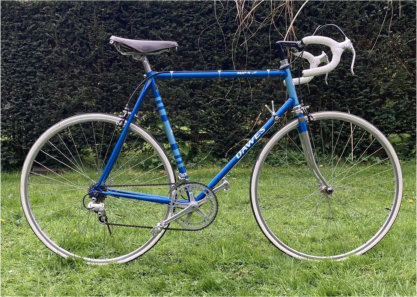 Q Are modern bikes better than traditional ones? They all seem more complicated.
Q Are modern bikes better than traditional ones? They all seem more complicated.
A In many ways the modern bikes are better, and nothing beats the thrill of getting a new bike, but at the same time there's nothing wrong with the traditional bike which has been around in the same form for about 100 years.
Over those 100 years, of course, there have been changes and improvements.
As metal science has developed new materials, often as a result of the needs of the World Wars, and also aeroplanes which needed new materials, the metal tubes that the bike is made from started to get lighter and stronger. As a result they were able to make the tubes slimmer, and the whole bike became lighter.
Early bikes had the brakes operated by steel rods and levers which have been replaced entirely by cable brakes using a twisted steel 'cord' which is not exposed to the air so can't get rusty and weighs a lot less. The brake mechanism itself has evolved to be more effective and is usually made of Aluminium so is lighter and rust free.
Scientists have improved the rubber for brake pads and for tyres, too, so the modern bike is more effective and safer.
However, special types of riding brought out specialist bikes, for example riding on rough ground and through wooded country was improved by adding 'suspension' which would absorb the shocks and bumps.
The sport of BMX riding developed from this and looks great fun, but it is a specialised activity for which a normal bike isn't really suited, and the bikes themselves aren't really suitable for riding on the road. The 'traditional' bike was usually reliable and the common faults (like a puncture) were easily fixed, often at the roadside by the rider themselves.
Cycle racing like the Tour de France, makes extreme demands of the riders and the bikes so engineers developed sophisticated improvements. Electric gear changing, hydraulic brakes etc. and these tend to 'trickle down' to the general public in the same way that racing car features eventually get to the road car, and Paris Fashion in clothing gets on to the high street.
An exception is disc brakes which have become commonplace on road bikes, but were resisted by the racing fraternity because of the perception that the disc could cause serious cuts in the event of a crash.
In the case of bikes, some of these specialist features, such as suspension, add weight and complexity so that if they go wrong you can't fix it yourself.
For weight and streamlining reasons lightweight alloy or Carbon Fibre tubes have been adopted on some bikes and these are recognisable by being fatter and a bit oval shaped compared to the round tubes of the trad bike. What difference this makes to the ordinary rider is doubtful, two hundredths of a second off the time it takes to ride to the shops is irrelevant. Add to that that repairing these exotic materials is more difficult than brazing steel and you can see that 'improvements' are not always for the better.
To sum up, older style bikes are still rideable and perfectly good for most purposes so unless you are a gadget freak and must have the latest, I'd say the traditional bike is fine.